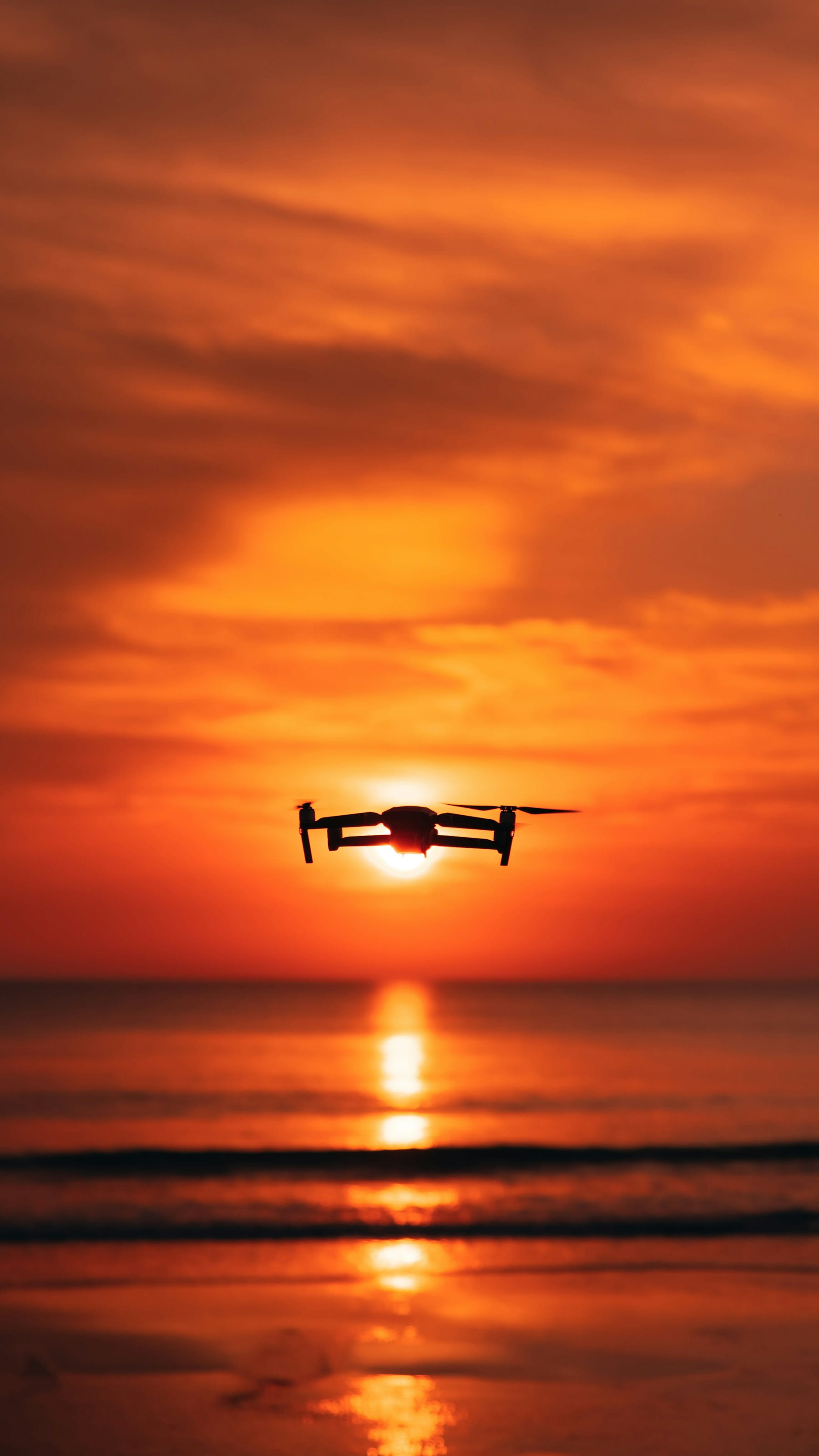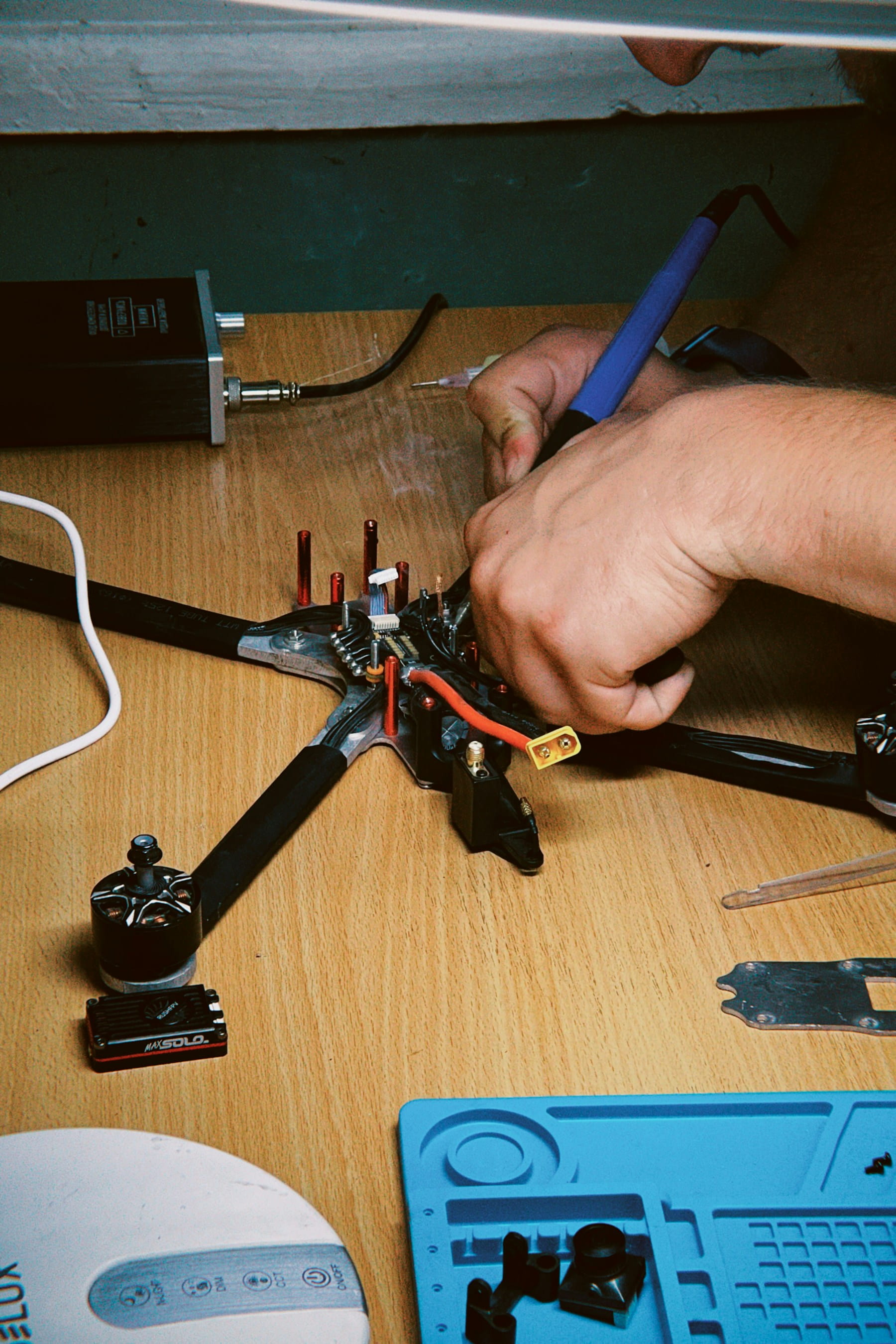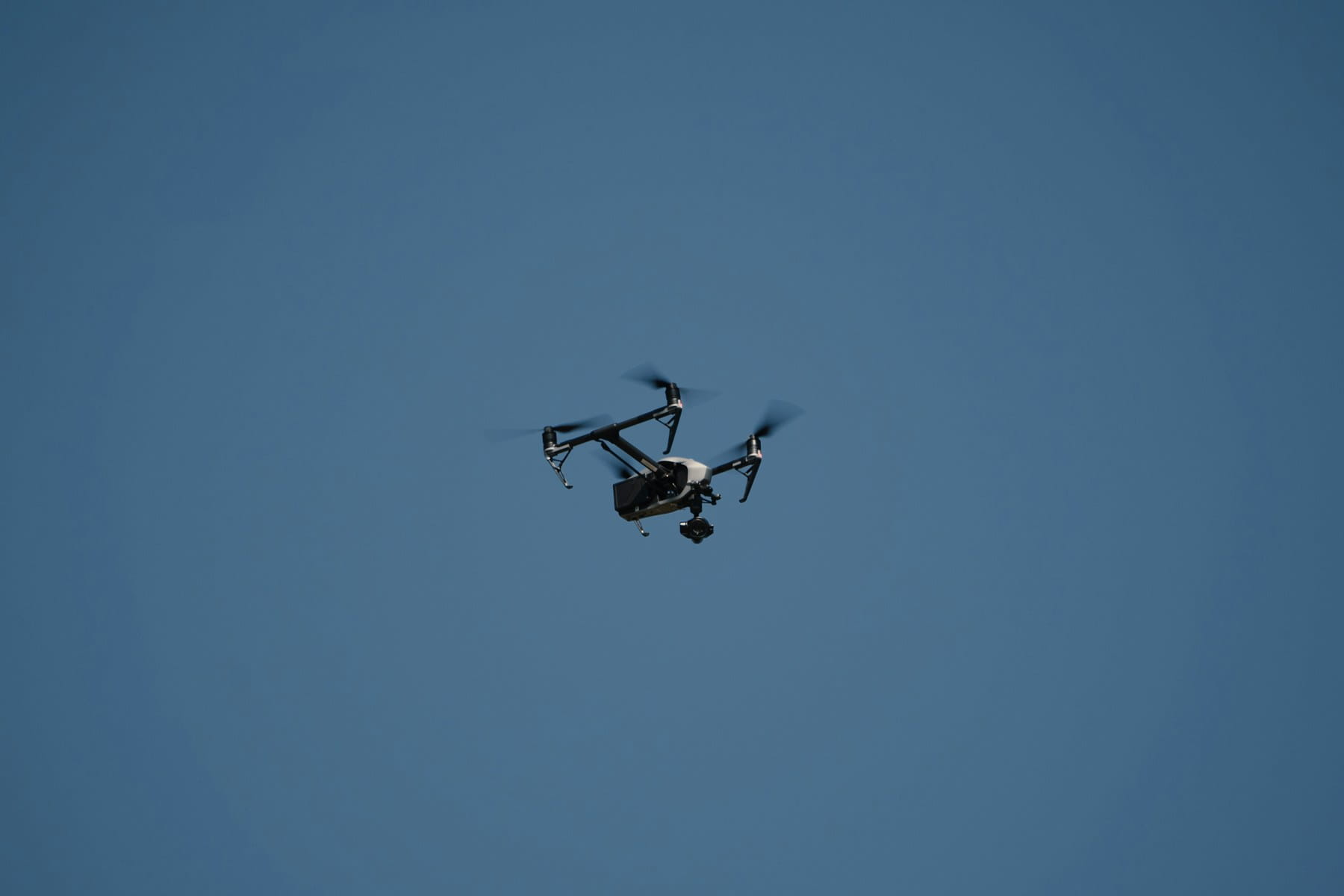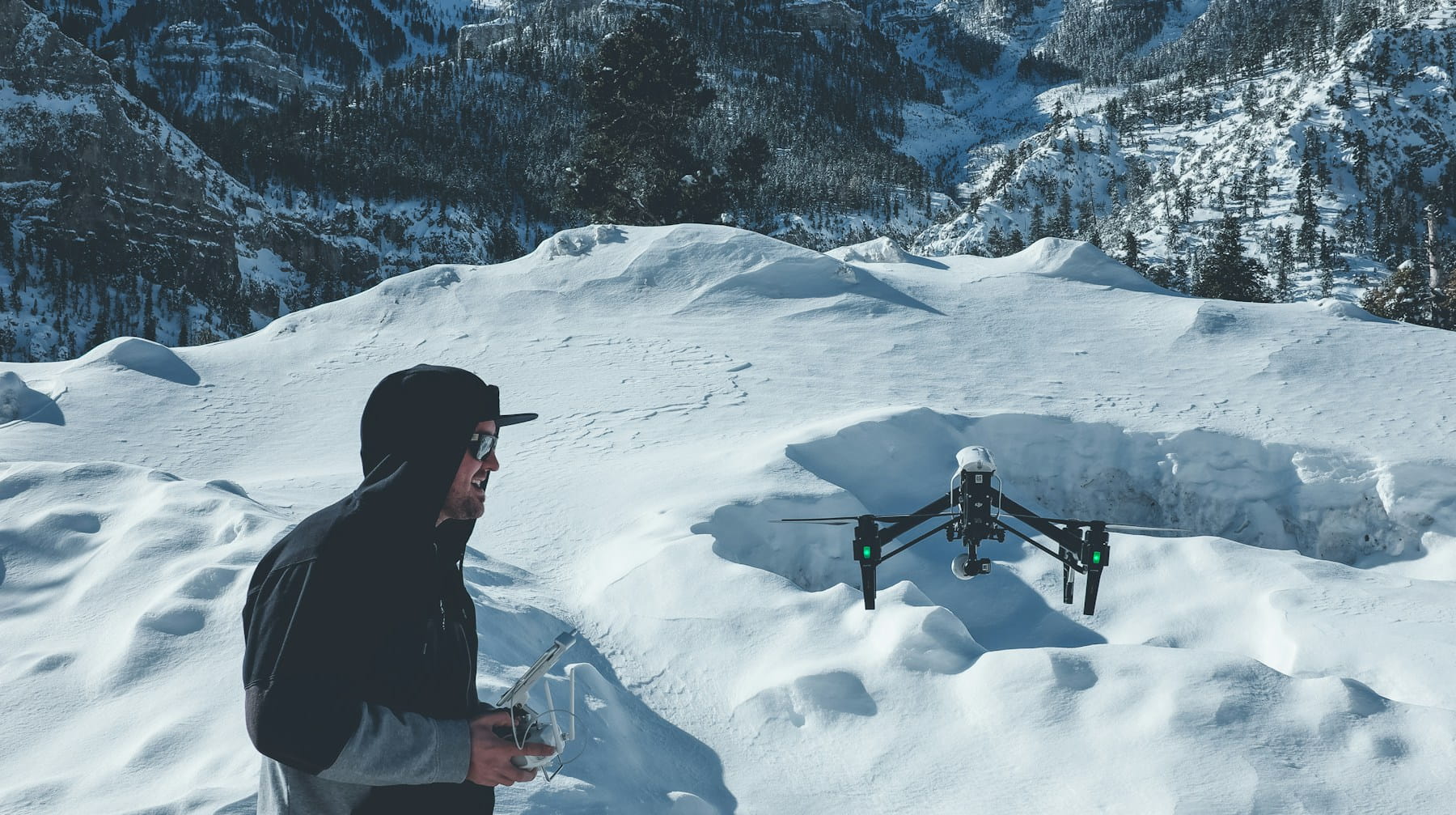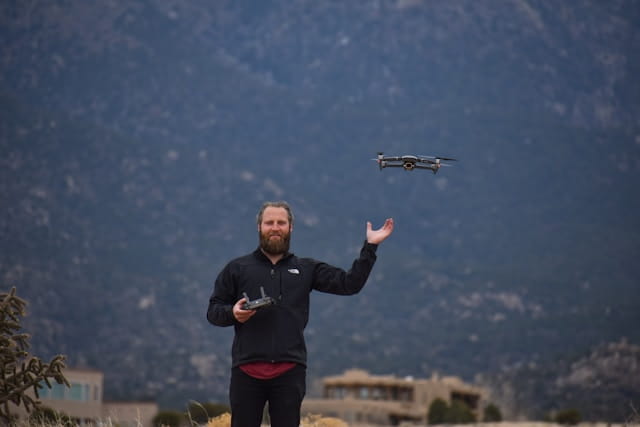Understanding the flight time of a drone involves factors like battery capacity, payload, environmental conditions, and flight patterns, which all influence how long your drone can stay airborne during missions.
Getting the most airtime from your drone matters more than specs on paper. Whether you're surveying a construction site, mapping agricultural fields, or conducting infrastructure inspections, understanding what affects flight duration helps you plan better missions and avoid costly interruptions.
Most commercial drone operators discover this the hard way - midway through a critical survey when their aircraft starts the low battery return-to-home sequence. The advertised 30-minute flight time suddenly becomes 18 minutes in real-world conditions.
This disconnect between marketing claims and actual performance stems from various factors that manufacturers rarely emphasize. Temperature, payload weight, flight patterns, and even pilot technique all play significant roles in determining how long your drone stays aloft.
Table of contents
- What determines drone flight time
- Battery technology and capacity
- Environmental factors affecting flight duration
- Aircraft weight and payload considerations
- Flight patterns and operational efficiency
- Current market leaders by flight time
- Enterprise vs consumer drone endurance
- Maximizing your drone's flight time
- Battery management and maintenance
- Planning operations around battery life
- Future developments in drone endurance
What determines drone flight time
Flight time depends on a complex relationship between power consumption and available energy storage. Think of it like fuel economy in cars - your mileage varies dramatically based on how you drive, road conditions, and vehicle load.
The primary factor is battery capacity measured in milliamp-hours (mAh). Higher capacity batteries store more energy, but they also add weight. This creates an interesting engineering challenge where simply adding bigger batteries doesn't always translate to longer flights.
Motor efficiency plays a huge role too. Brushless motors have largely replaced brushed ones in modern drones because they waste less energy as heat. The electronic speed controllers (ESCs) that manage these motors have also improved significantly, contributing to better overall efficiency.
Propeller design affects power consumption more than most people realize. Larger propellers typically provide more thrust per watt, but they also create more drag at higher speeds. Finding the right balance requires careful engineering.
Battery technology and capacity
Lithium polymer (LiPo) batteries dominate the drone market for good reasons. They offer high energy density, relatively low weight, and can deliver the high current outputs needed for multi-rotor aircraft. But they're also finicky and require careful handling.
Most consumer drones use 3S or 4S LiPo batteries (meaning 3 or 4 cells in series), providing 11.1V or 14.8V respectively. Enterprise aircraft often use 6S batteries for higher voltage and power delivery. The trade-off is increased complexity in charging and safety systems.
Battery capacity ranges vary widely across different drone categories:
| Drone Category | Typical Battery Capacity | Expected Flight Time |
|---|---|---|
| Mini drones | 500-1,500 mAh | 8-15 minutes |
| Consumer drones | 2,000-5,000 mAh | 15-35 minutes |
| Professional drones | 4,000-8,000 mAh | 25-45 minutes |
| Enterprise drones | 6,000-15,000 mAh | 30-60 minutes |
Smart batteries have become standard in professional aircraft. These include built-in management systems that monitor cell voltage, temperature, and charge cycles. They also communicate with the flight controller to provide accurate remaining flight time estimates.
Some manufacturers are experimenting with lithium-ion batteries, which offer better longevity and safety characteristics than LiPo. The trade-off is slightly lower power density and higher cost.
Environmental factors affecting flight duration
Temperature has a massive impact on battery performance. Cold weather can reduce flight time by 20-40% because chemical reactions in batteries slow down at lower temperatures. Many operators learn this during their first winter operations.
Wind conditions force the aircraft to work harder to maintain position and speed. A 15 mph headwind can cut flight time by 25% or more, while tailwinds can extend it slightly. Gusty conditions are particularly demanding because the flight controller constantly adjusts motor speeds to maintain stability.
Altitude affects both battery performance and aerodynamic efficiency. Higher altitudes mean thinner air, so propellers must work harder to generate the same thrust. The rule of thumb is approximately 3% reduction in flight time per 1,000 feet of altitude gain.
Humidity and barometric pressure also play smaller roles. High humidity can affect battery chemistry slightly, while low pressure reduces propeller efficiency. These factors are usually minor compared to temperature and wind effects.
Aircraft weight and payload considerations
Every gram counts when it comes to flight time. The relationship between weight and power consumption isn't linear - doubling the weight more than doubles the power required to hover.
Payload weight includes cameras, sensors, and any additional equipment mounted on the aircraft. A 200-gram camera might reduce flight time by 3-5 minutes on a typical consumer drone. Professional mapping payloads can be much heavier, sometimes cutting flight time in half.
The position of additional weight matters too. Weight mounted far from the center of gravity requires more control authority to manage, leading to higher power consumption. This is why gimbal-mounted cameras are typically positioned close to the aircraft's center of mass.
Some interesting payload considerations:
- LiDAR sensors: 300-800 grams, reducing flight time by 15-30%
- Multispectral cameras: 150-400 grams, reducing flight time by 8-20%
- Thermal imaging cameras: 200-600 grams, reducing flight time by 10-25%
- Spraying systems: 2-10 kg when loaded, reducing flight time by 50-80%
Flight patterns and operational efficiency
How you fly affects battery consumption as much as what you carry. Aggressive maneuvers, rapid altitude changes, and high-speed flight all drain batteries faster than smooth, controlled movements.
Hovering is actually quite efficient for multi-rotor aircraft. The motors run at steady speeds without the constant adjustments needed during forward flight. But hovering in wind requires continuous corrections, which increases power consumption.
Forward flight at moderate speeds (15-25 mph) is often the most efficient flight mode. The aircraft tilts forward, using some of the rotor thrust for propulsion instead of just lift. This is more efficient than hovering while also covering ground.
Automated flight patterns designed for mapping or surveying are typically optimized for efficiency. The aircraft flies straight lines at constant altitude and speed, minimizing power-hungry maneuvers. Manual piloting often involves more erratic movements that waste energy.
Acceleration and deceleration phases consume extra power. Starting and stopping frequently during a mission reduces overall flight time compared to maintaining steady speeds.
Current market leaders by flight time
Different manufacturers have taken various approaches to extending flight time. Some focus on larger batteries, others on more efficient systems, and a few have developed hybrid power solutions.
DJI dominates much of the market with their range of consumer and professional aircraft. Their latest models achieve impressive flight times through a combination of efficient motors, smart batteries, and aerodynamic improvements:
The DJI Mini series represents excellent value for flight time relative to cost. These lightweight aircraft achieve 30-50 minute flights while remaining under regulatory weight thresholds in many countries. The trade-off is reduced payload capacity and weather resistance.
Enterprise aircraft prioritize reliability and capability over maximum flight time. The DJI Matrice series offers 25-55 minutes depending on payload and configuration. These aircraft include redundant systems and industrial-grade components that add weight but improve operational safety.
Specialized long-endurance platforms exist for specific applications. Fixed-wing drones can achieve flight times measured in hours rather than minutes, but they require runway space and can't hover for detailed inspections.
Some operators are experimenting with tethered systems for extended operations. These aircraft receive power through a cable connection, allowing unlimited flight time within the tether length. The obvious limitation is reduced mobility.
Enterprise vs consumer drone endurance
Professional aircraft face different requirements than consumer models. They need to carry heavier payloads, operate in challenging conditions, and maintain reliable performance over thousands of flight hours.
Enterprise drones typically sacrifice maximum flight time for operational flexibility. Swappable payloads, redundant systems, and ruggedized construction all add weight. But they also provide capabilities that consumer drones simply can't match.
Flight time becomes less critical when you can quickly swap batteries. Many professional operations use multiple battery sets, rotating them through chargers to maintain continuous operations. Hot-swappable batteries allow aircraft changes in under two minutes.
Consumer drones optimize for maximum advertised flight time because it's an easy specification to compare. Professional users care more about mission completion rates and operational efficiency than peak performance numbers.
The cost calculation differs significantly too. A consumer might calculate dollars per minute of flight time, while commercial operators focus on revenue per flight hour or cost per acre surveyed.
Maximizing your drone's flight time
Pre-flight preparation makes a huge difference in actual flight duration. Starting with fully charged, properly conditioned batteries is obvious but critical following comprehensive pre-flight checklists. Batteries should be at room temperature before flight - cold batteries perform poorly and hot batteries can be dangerous.
Weight reduction helps more than most pilots realize. Remove unnecessary accessories, use the minimum required payload, and consider whether that extra memory card or backup sensor is really needed for the specific mission.
Flight planning software can optimize routes for maximum efficiency. Flying the shortest possible distance while maintaining required overlap for mapping missions saves significant battery power. Straight-line paths are more efficient than complex patterns with frequent turns.
Smooth piloting techniques conserve energy. Gradual altitude changes, gentle turns, and avoiding rapid speed changes all help extend flight time. The aircraft's motors work most efficiently at steady power settings.
Some pilots use sport modes or high-speed settings unnecessarily. These modes often disable efficiency optimizations in favor of performance. Normal or efficiency modes typically provide the longest flight times.
Battery management and maintenance
LiPo batteries require careful handling to maintain performance and safety as part of comprehensive maintenance protocols. Storage voltage (around 3.8V per cell) preserves battery life when not flying regularly. Many smart batteries handle this automatically, but older models need manual management.
Charge cycles matter more than calendar age for most drone batteries. A battery that's flown and recharged twice weekly will typically last longer than one that sits unused for months. Regular use keeps the chemical processes active and balanced.
Temperature management during charging prevents damage and maintains capacity. Charging in extreme cold or heat reduces battery life and can create safety hazards. Room temperature charging is ideal.
Balancing ensures all cells in a multi-cell battery pack maintain equal voltage. Unbalanced batteries perform poorly and can be dangerous. Quality chargers include balancing functions, but cheaper units might skip this critical step.
Signs of battery degradation include:
- Reduced flight time despite full charge indication
- Swelling or physical deformation
- Excessive heat during charging or use
- Failure to reach full charge voltage
- Rapid voltage drop under load
Planning operations around battery life
Mission planning must account for actual flight conditions rather than advertised specifications. Smart operators with proper pilot training plan for 70-80% of advertised flight time to account for environmental factors and provide safety margins.
Battery swap locations become critical for large survey areas. The aircraft needs safe landing zones with adequate clearance from obstacles and people. These locations should be accessible by ground crew and provide shelter for equipment.
Weather monitoring helps predict actual flight performance. Strong winds, extreme temperatures, or high humidity all affect battery performance. Some days it's better to postpone operations than struggle with reduced performance.
Redundancy planning assumes battery failures will occur. Professional operations typically carry 50-100% more batteries than theoretically required. This accounts for defective units, unexpected power consumption, and operational delays.
Route optimization software can calculate battery requirements for complex missions while incorporating comprehensive flight data analysis. These tools account for altitude changes, wind effects, and required safety margins to determine the minimum battery capacity needed.
Future developments in drone endurance
Battery technology continues advancing, though improvements are incremental rather than revolutionary. Solid-state batteries promise better safety and longevity, but they're still expensive and not widely available for drone applications.
Fuel cells offer interesting possibilities for extended flight times. Several companies are developing hydrogen fuel cell systems that can provide hours of flight time. The challenge is safely storing and handling hydrogen fuel in aircraft applications.
Hybrid systems combining batteries with small combustion engines are appearing in specialized applications. These systems can recharge batteries during flight, extending operational time significantly. The added complexity and noise limit their appeal for most commercial operations.
Solar panels integrated into aircraft structures could supplement battery power during long missions. The power density of solar cells continues improving, making this approach more viable for certain applications.
Wireless power transmission remains largely experimental but could enable unlimited flight time for tethered or short-range operations. The technology exists but faces regulatory and safety challenges for widespread deployment.
Advanced flight management systems are becoming more sophisticated at optimizing power consumption. Machine learning algorithms can adjust flight parameters in real-time to maximize efficiency based on current conditions while providing detailed flight data monitoring capabilities.
Why Flight Time Optimization Matters for Professional Operations
The gap between advertised and actual flight time highlights the importance of proper mission planning and performance optimization. Professional operators who master battery management and flight efficiency gain significant competitive advantages while reducing operational costs and mission failures.
- Mission success: Accurate flight time planning prevents mid-mission battery failures and incomplete operations
- Cost efficiency: Optimized battery usage reduces replacement costs and extends operational capabilities
- Operational reliability: Understanding real-world performance enables consistent service delivery and client confidence
- Safety enhancement: Proper battery management reduces emergency situations and improves overall flight safety
Fast Facts: Drone Flight Time Factors
| Factor Category | Impact on Flight Time | Optimization Strategies |
|---|---|---|
| Battery Capacity | 2,000-15,000 mAh range | Select appropriate capacity for mission requirements |
| Environmental Conditions | 20-40% reduction in cold weather | Monitor weather and adjust planning accordingly |
| Payload Weight | 200g camera reduces time by 3-5 min | Minimize unnecessary equipment and accessories |
| Flight Patterns | Smooth flying vs aggressive maneuvers | Use automated patterns and efficient piloting techniques |
| Battery Age/Condition | Degraded batteries lose 10-30% capacity | Implement systematic maintenance and replacement schedules |
Getting Started with Flight Time Optimization
- Assess your operational requirements and identify critical flight duration needs
- Implement systematic planning using comprehensive mission planning tools
- Monitor and track performance through detailed flight data analysis
- Establish maintenance protocols following proven battery management procedures
- Train operators in efficient piloting techniques and professional standards
Essential preparation: Before deploying flight time optimization strategies, ensure your team understands how battery performance integrates with broader operational planning and safety management systems.
In Summary
Professional drone operations require more than just knowing maximum flight time. Success depends on understanding how environmental conditions, payload requirements, and operational techniques affect actual performance. This knowledge, combined with proper planning tools, enables operators to complete missions efficiently and safely.
Ready to Maximize Your Drone's Flight Performance?
Join professional operators who have optimized their flight operations through systematic battery management and intelligent mission planning. Whether you're conducting mapping surveys, infrastructure inspections, or precision agriculture operations, maximizing flight time capabilities enables operational excellence and cost-effective service delivery.
Start your free trial today — no credit card required.
Or book a demo to see how DroneBundle integrates flight time optimization with maintenance tracking, performance monitoring, and mission planning in a single platform designed specifically for professional drone operations.
Transform your flight time challenges into competitive advantages. With comprehensive battery management and intelligent planning capabilities, every flight becomes an opportunity to demonstrate operational efficiency and professional excellence.
